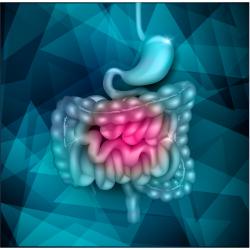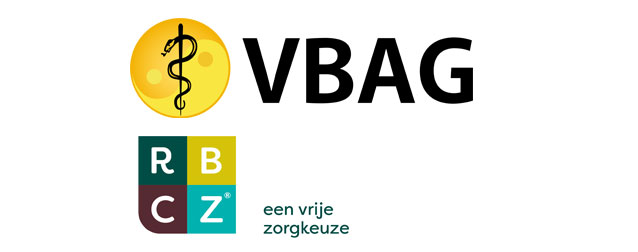Dementie, alzheimer en alcohol
Zware drinkers hoog risico op dementie
Terwijl af en toe een glaasje alcohol juist tegen dementie lijkt te beschermen, stijgt bij hoge alcoholinname het risico op dementie extreem. Bij zware drinkers gaat het om een verdrievoudiging van dat risico.
Iemand wordt als zware drinker beschouwd bij meer dan vier tot zes glazen alcohol per dag; zestig gram pure alcohol voor mannen en veertig gram pure alcohol voor vrouwen. Voor vrijwel alle vormen van dementie stijgt het risico met zware alcoholinname, maar vooral ook voor dementie op jonge leeftijd. Drankgebruik blijkt daarmee de grootste, beïnvloedbare factor te zijn die kan leiden tot dementie (Schwarzinger et al., 2018).
Tijdens de studie, die werd gepubliceerd in The Lancet Public Health, werden de gegevens van 30 miljoen Fransen gedurende een periode van zes jaar geanalyseerd. Ruim 80 procent van de Franse bevolking van 60 jaar en ouder was onderdeel van dit cohort. De helft van de mensen met dementie op jonge leeftijd bleek een verleden van overmatig alcoholgebruik te hebben. Alcoholgebruik is daarom een belangrijk, en vaak over het hoofd gezien, aandachtspunt voor artsen en therapeuten bij hun anamnese.
De studie maakt ook ruim baan voor voorlichtingscampagnes van de overheid over de risico’s van te hoge alcoholconsumptie. Wil je je hersenen beschermen, dan is een van de beste dingen die je kunt doen sterk te minderen met alcohol, zo is de boodschap. Dementie komt zeer veel voor, de prevalentie is zeven procent onder mensen van zestig jaar en ouder. Hoeveel minder gevallen van dementie we kunnen verwachten als mensen minder drinken, is nu precies uitgerekend en blijkt fenomenaal hoog.
Referenties:
1. Livingston, G, Sommerlad, A, Orgeta, V et al. Dementia prevention, intervention, and care. Lancet. 2017; 390: 2673–2734
2. Prince, M, Bryce, R, Albanese, E, Wimo, A, Ribeiro, W, and Ferri, CP. The global prevalence of dementia: a systematic review and metaanalysis. (e2.)Alzheimers Dement. 2013; 9: 63–75
3. GBD DALYs and HALE Collaborators. Global, regional, and national disability-adjusted life-years (DALYs) for 333 diseases and injuries and healthy life expectancy (HALE) for 195 countries and territories, 1990–2016: a systematic analysis for the Global Burden of Disease Study 2016. Lancet. 2017; 390: 1260–1344
4. Rehm, J, Gmel, GE Sr, Gmel, G et al. The relationship between different dimensions of alcohol use and the burden of disease—an update. Addiction. 2017; 112: 968–1001
5. Verbaten, MN. Chronic effects of low to moderate alcohol consumption on structural and functional properties of the brain: beneficial or not?. Hum Psychopharmacol. 2009; 24: 199–205
6. Topiwala, A, Allan, CL, Valkanova, V et al. Moderate alcohol consumption as risk factor for adverse brain outcomes and cognitive decline: longitudinal cohort study. BMJ. 2017; 357: j2353
7. Oslin, D, Atkinson, RM, Smith, DM, and Hendrie, H. Alcohol related dementia: proposed clinical criteria. Int J Geriatr Psychiatry. 1998; 13: 203–212
8. Gupta, S and Warner, J. Alcohol-related dementia: a 21st-century silent epidemic?. Br J Psychiatry. 2008; 193: 351–353
9. Ridley, NJ, Draper, B, and Withall, A. Alcohol-related dementia: an update of the evidence. Alzheimers Res Ther. 2013; 5: 3
10. Rehm, J, Mathers, C, Popova, S, Thavorncharoensap, M, Teerawattananon, Y, and Patra, J. Global burden of disease and injury and economic cost attributable to alcohol use and alcohol-use disorders. Lancet. 2009; 373: 2223–2233
11. Rehm, J, Anderson, P, Barry, J et al. Prevalence of and potential influencing factors for alcohol dependence in Europe. Eur Addict Res. 2015; 21: 6–18
12. Nordstrom, P, Nordstrom, A, Eriksson, M, Wahlund, LO, and Gustafson, Y. Risk factors in late adolescence for young-onset dementia in men: a nationwide cohort study. JAMA Intern Med. 2013;173: 1612–1618
13. Agence Technique de l'Information sur l'Hospitalisation. Aide à l'utilisation des informations de chaînage [How to use de-identified patient information]. ((accessed Feb 10, 2018).)
http://www.atih.sante.fr/aide-lutilisation-des-informations-de-chainage
14. St Germaine-Smith, C, Metcalfe, A, Pringsheim, T et al. Recommendations for optimal ICD codes to study neurologic conditions: a systematic review. Neurology. 2012; 79: 1049–1055
15. Desesquelles, A, Demuru, E, Salvatore, MA et al. Mortality from Alzheimer's disease, Parkinson's disease, and dementias in France and Italy: a comparison using the multiple cause-of-death approach. J Aging Health. 2014; 26: 283–315
16. Roman, GC, Tatemichi, TK, Erkinjuntti, T et al. Vascular dementia: diagnostic criteria for research studies. Report of the NINDS-AIREN International Workshop. Neurology. 1993; 43: 250–260
17. Weuve, J, Proust-Lima, C, Power, MC et al. Guidelines for reporting methodological challenges and evaluating potential bias in dementia research. Alzheimers Dement. 2015; 11: 1098–1109
18. Snoep, JD, Morabia, A, Hernandez-Diaz, S, Hernan, MA, and Vandenbroucke, JP. Commentary: a structural approach to Berkson's fallacy and a guide to a history of opinions about it. Int J Epidemiol. 2014; 43: 515–521
19. Korn, EL, Graubard, BI, and Midthune, D. Time-to-event analysis of longitudinal follow-up of a survey: choice of the time-scale. Am J Epidemiol. 1997; 145: 72–80
20. Thiebaut, AC and Benichou, J. Choice of time-scale in Cox's model analysis of epidemiologic cohort data: a simulation study. Stat Med. 2004; 23: 3803–3820
21. Prasad, V and Jena, AB. Prespecified falsification end points: can they validate true observational associations?. JAMA. 2013; 309: 241–242
22. Letenneur, L, Gilleron, V, Commenges, D, Helmer, C, Orgogozo, JM, and Dartigues, JF. Are sex and educational level independent predictors of dementia and Alzheimer's disease? Incidence data from the PAQUID project. J Neurol Neurosurg Psychiatry. 1999; 66: 177–183
23. Raffaitin, C, Gin, H, Empana, JP et al. Metabolic syndrome and risk for incident Alzheimer's disease or vascular dementia: the Three-City Study. Diabetes Care. 2009; 32: 169–174
24. Schomerus, G, Lucht, M, Holzinger, A, Matschinger, H, Carta, MG, and Angermeyer, MC. The stigma of alcohol dependence compared with other mental disorders: a review of population studies. Alcohol Alcohol. 2011; 46: 105–112
25. Rehm, J, Shield, KD, Gmel, G, Rehm, MX, and Frick, U. Modeling the impact of alcohol dependence on mortality burden and the effect of available treatment interventions in the European Union. Eur Neuropsychopharmacol. 2013; 23: 89–97
26. Flegal, KM, Keyl, PM, and Nieto, FJ. Differential misclassification arising from nondifferential errors in exposure measurement. Am J Epidemiol. 1991; 134: 1233–1244
27. Albanese, E, Launer, LJ, Egger, M et al. Body mass index in midlife and dementia: systematic review and meta-regression analysis of 589,649 men and women followed in longitudinal studies. Alzheimers Dement (Amst). 2017; 8: 165–178
28. Anstey, KJ, Ashby-Mitchell, K, and Peters, R. Updating the evidence on the association between serum cholesterol and risk of late-life dementia: review and meta-analysis. J Alzheimers Dis. 2017;56: 215–228
29. Organisation for Economic Co-operation and Development (OECD). Tackling harmful alcohol use: economics and public health policy. Organisation for Economic Co-operation and Development (OECD), Paris; 2015
30. Anderson, P, Chisholm, D, and Fuhr, DC. Effectiveness and cost-effectiveness of policies and programmes to reduce the harm caused by alcohol. Lancet. 2009; 373: 2234–2246
31. Persoz, C. A new President in France: an opportunity for public health policy against alcohol-related harms and deaths?. Lancet Public Health. 2017; 2: e256–e257
« Vorige | Terug | Volgende »
Deel deze pagina
Volg ons op
Ander nieuws
DNA onderzoek: Van wangslijm sample tot DNA Boek, extra diagnose

DNA onderzoek: Van wangslijm sample tot DNA Boek, extra diagnose
Lees verder »









